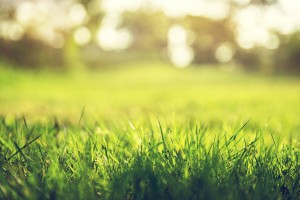 Spring might be a few months away, but it’s still time to start thinking about your lawn. What problems did you have last year? Are there any landscaping projects you want to tackle? Are there things you need to improve to get the lawn you want? Here’s what you should be planning for in the year ahead.
Spring might be a few months away, but it’s still time to start thinking about your lawn. What problems did you have last year? Are there any landscaping projects you want to tackle? Are there things you need to improve to get the lawn you want? Here’s what you should be planning for in the year ahead.
The Main Components of Lawn Care
There are 5 main components of lawn care. Each one of these interacts with the others, influencing the growth and health of your lawn:
Watering – Grass needs water to thrive. Irrigation needs will vary depending on the grass varieties that make up your lawn. Watering must be balanced with rainfall to prevent the soil from turning into mud.
Fertilizing: To get the best results, soil samples should be sent in for testing two or three weeks ahead of time. From there, you can choose a fertilizer formula that can deliver what your grass needs. Have a Billy Goat overseeder? You can also use it to drop pelletized fertilizer.
Overseeding -After three or four years, grass matures and starts to thin out. Overseeding establishes new grass that fills in the gaps, creating a lush lawn.
Aerating and Dethatching – Compacted soil and thick thatch blocks water, sunlight, and oxygen. They can also lead to problems with insects, slow growth and weeds. If you need to do either frequently, it’s a sign that something else is wrong with your yard. Reducing foot and vehicle traffic can stop compaction, while better mulching and fertilizer practices reduce thatch.
Mowing – Grass needs to be short for seeds and fertilizer to reach the soil, and long to shade the soil in hot weather. Each cut should remove no more than 1/3 of the grass height. Otherwise, it will have problems recovering.
Here’s how you can break these tasks down into seasons.
Winter
Catch up on maintenance: Now is a great time to repair equipment, add accessories, and ready it for the growing season.
Remove brush: With plants either dead or in hibernation, this is the easiest time to do some brush cutting.
Clean up your lawn: Once the snow melts and the soil dries out, you’ll find your lawn covered in leaves, branches and other debris. Removing this debris now will uncover grass so it can grow.
Spring
Apply pre-emergent herbicides: These herbicides prevent weeds from sprouting, and they’re the only effective herbicide against crabgrass.
Aerate: Open up the soil to water, sunlight and oxygen. Correct compaction caused by foot traffic and vehicles over the winter.
Overseed warm-season grasses: Is your lawn looking patchy? Now is the time to lay down seed for warm grasses. Herbicides hinder new grass growth, so plan on at least a month between weed treatment and seeding.
Fertilize: Putting down fertilizer as the grass starts growing gives it a boost. This helps establish new grass and gives older plants the chance to store nutrients needed to weather peak summer temperatures.
Summer
Look for grubs: Grub worms show up in late May or early June. The presence of a few grubs is fine. However, if you start seeing lawn damage and can count more than 10 worms in a square foot of lawn, you need to apply an insecticide.
Remove weeds: Physically remove weeds or apply post-emergent herbicides to stop them from spreading across your lawn.
Mowing: Grass growth is at its fastest in the early summer. You may need to mow more than once a week to maintain grass height without cutting too much at one time. Once the summer heat hits, keep the grass as long as possible. This helps it hold in moisture and deflect heat away from the soil.
Watering: Most grass varieties need an inch of water per week to stay active in the summer. Go for infrequent, heavy watering to help the water reach deep in the soil. If the grass goes dormant, reduce watering to one inch of water per month. This keeps the grass from exiting dormancy too early.
Fall
Dethatch: Thatch is at its peak in the early fall. If the thatch layer is over ½ inch thick, it needs to be removed.
Aerate: Having compaction issues? Aerating breaks up the soil, so the root system can get the water and air it needs.
Overseed cool-season grasses: Planting these grasses extends your lawn’s growing season.
Fertilize: While spring fertilizer helps grass survive the summer, fall fertilizing helps grass gather the nutrients needed to survive the winter.
Remove leaves: Decaying leaves are acidic, and they prevent grass from getting sunlight. Collected leaves can be used as mulch.
Get Ready for Spring with Help from Billy Goat Parts
Need to get your equipment ready for the new year? Billygoatparts.com is a certified dealer for Billy Goat as well as their partners including Honda Engines, Vanguard, Briggs & Stratton, and Subaru Power. That means you can order everything you need to get your Billy Goat equipment running from one place. We can ship parts and accessories to any address in the United States and Canada.
